James Valentine and Sterling Ball: “Building a guitar is not like writing a song. You’re creating a three-dimensional tool”
The Maroon 5 star and Ernie Ball Music Man head honcho discuss the making of the Valentine signature model
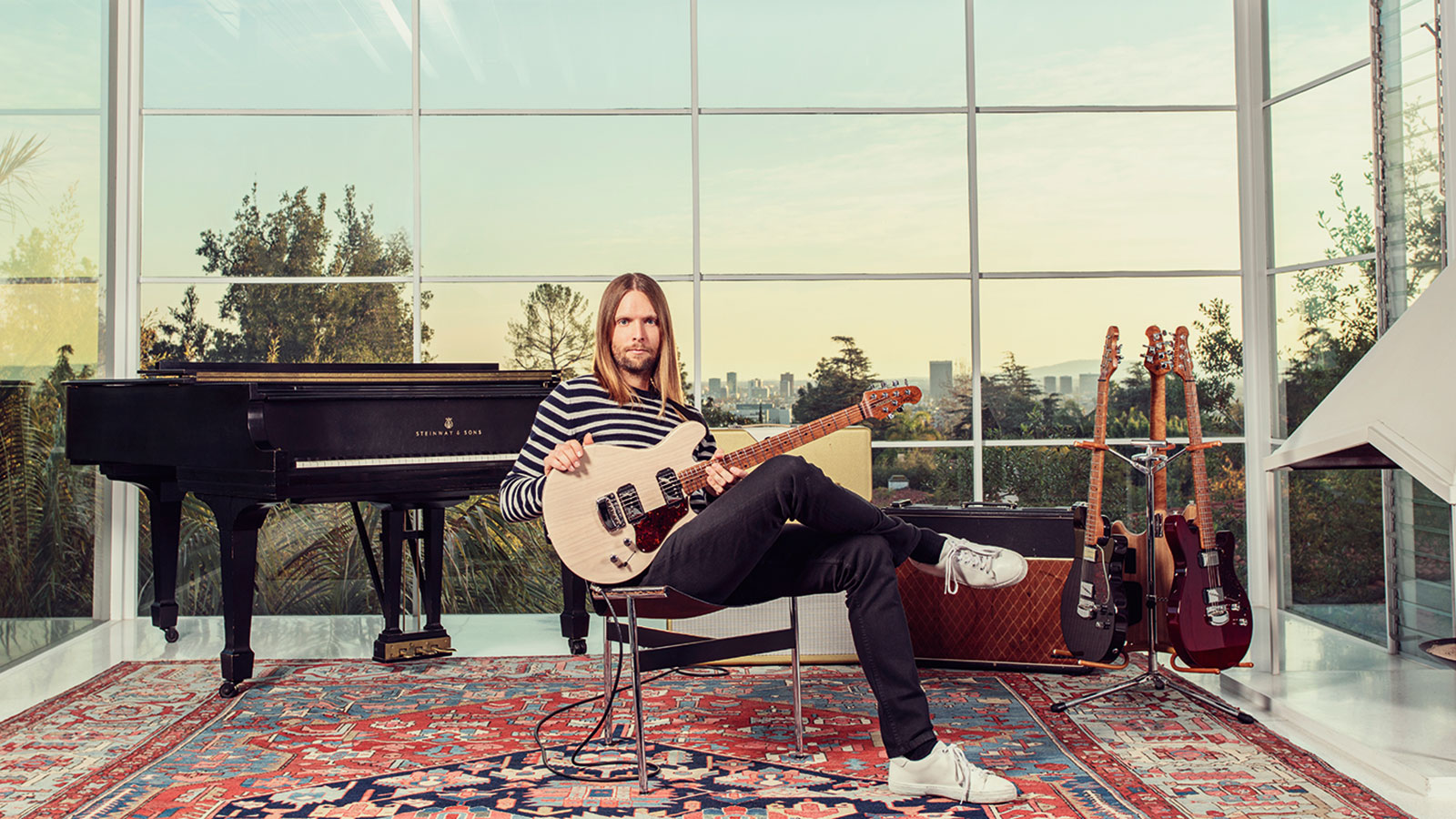
James Valentine and Sterling Ball broke the mould with the Valentine - a guitar whose custom spec fused classic design with renegade touches. We meet the Maroon 5 star to hear more about the guitar’s path towards production.
The last thing that James Valentine wanted was a custom model. It was 2015, and every time the Maroon 5 guitarist was propositioned by the top brass of Ernie Ball Music Man, he restated his allegiance to his collection of vintage Telecasters.
“I owe a lot to those guys,” he reflects. “Back in 1999, my power-trio, Square, entered the Ernie Ball Battle Of The Bands and we ended up winning the $25,000. We’ve had a relationship ever since. But they were talking to me about a signature guitar and I was like, ‘I’m cool, I got my guitars...’”
I visited James at the studio and he was thinking, ‘What have I got myself into?’
By summer 2015, Valentine had relented, but Sterling Ball believes the project was still a whisker away from oblivion. “I think James was apprehensive,” recalls the designer, who has owned the California-based operation since 1984.
“I visited him at the studio and he was thinking, ‘What have I got myself into?’ If we hadn’t had that personal relationship, I’m willing to bet he would have cancelled the morning he was supposed to come in. The process is intimidating. It’s not like writing a song. You’re creating a three-dimensional tool.”
It was an inauspicious start. But when the Valentine launched at NAMM 2016 - winning the award for ‘Best In Show’ - the industry flocked to a wedge body that flouted the rulebook, a roasted-maple bolt-on neck that looked good enough to eat, and an electronics spec with a few secrets up its sleeve.
Both in its standard format and the limited-edition Ball Family Reserve version that sold out its 89-item production run in a fingersnap last September, this is a guitar that flies the flag for quirks and curveballs in an age of déjà vu.
Want all the hottest music and gear news, reviews, deals, features and more, direct to your inbox? Sign up here.
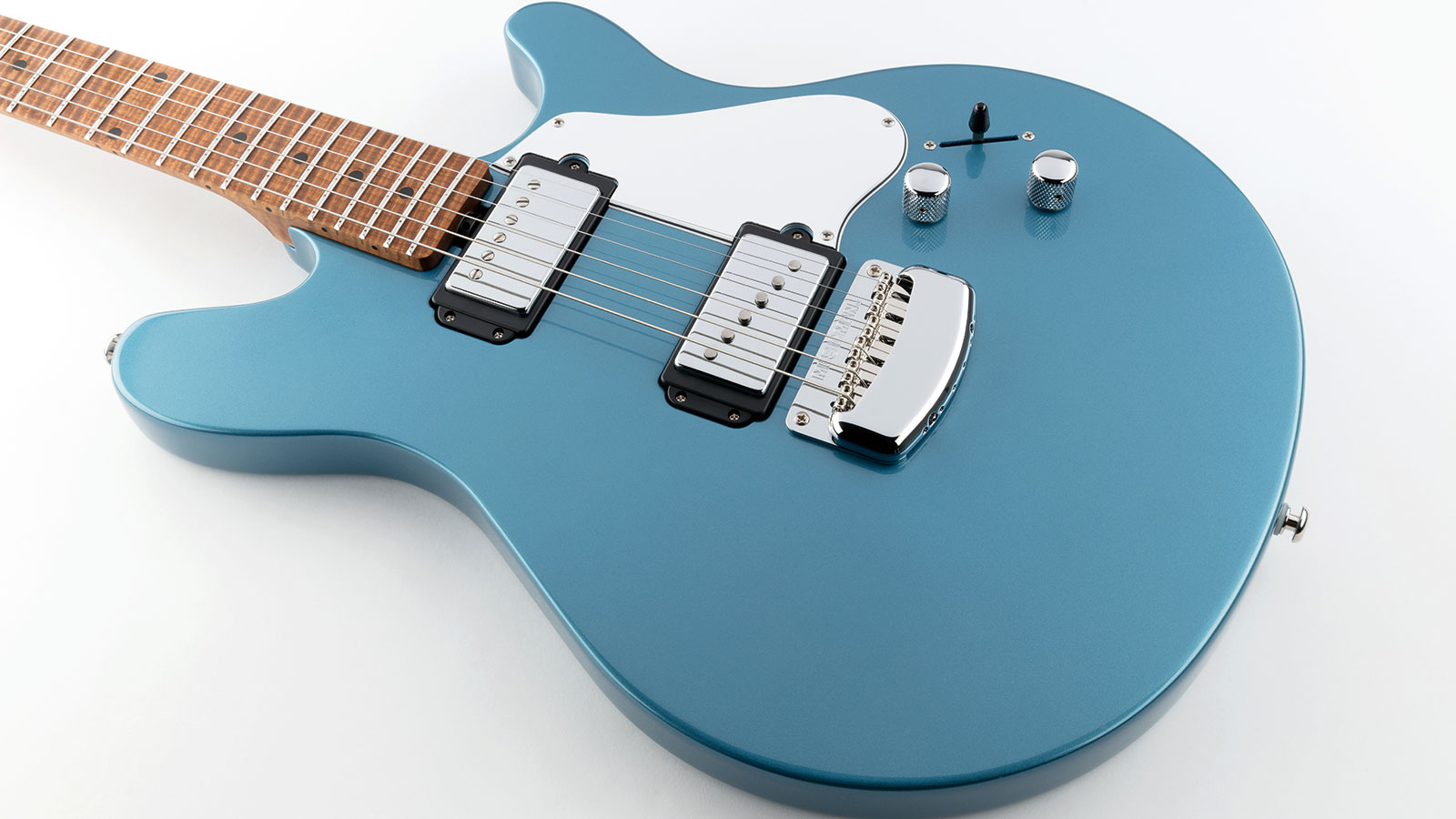
Be my Valentine
What was your original vision for the Valentine?
JV: “I really wanted something that looked classic, but hadn’t been done before. I didn’t want to just do another Telecaster or Stratocaster-shaped thing. If I was gonna do this, I wanted to add something to the conversation.”
It’s a huge challenge to design a new body that’s both classic and contemporary, isn’t it?
It’s hard to come up with an original shape. That’s why the electric guitar, in 70 years, hasn’t changed that much
JV: “Yeah, it’s hard to come up with an original shape. That’s why the electric guitar, in 70 years, hasn’t changed that much - they nailed it right away. I was talking about my favourite guitars, and Sterling brought out two different CAD layouts of a Tele and a 335. We put them on top of each other, starting pulling on the edges, and came up with that shape.”
SB: “When you’re creating a guitar with an artist, even if they’re incredibly knowledgeable, it’s trying to peel out what’s in their head and get it down on paper. You have to wear a lot of hats. You have to be part-therapist, part-priest.
“I knew it had to be Tele-esque. I knew James didn’t want a cutaway, but I still found just a ‘plank’ guitar a little uncomfortable. The tapering came to me in the middle of the night - y’know, we can make the body thinner at the top than the bottom, like a wedge. We got a significant amount of wood off doing that. And any time you can take weight out of a guitar - especially an ash guitar - it’s a benefit.”
JV: “The first prototypes didn’t have the wedge design. We initially built a pure slab body, but they were just too damn heavy. Maybe I’m getting old, but I didn’t want a heavy-assed guitar. I’ve been used to playing pretty light Teles on stage.”
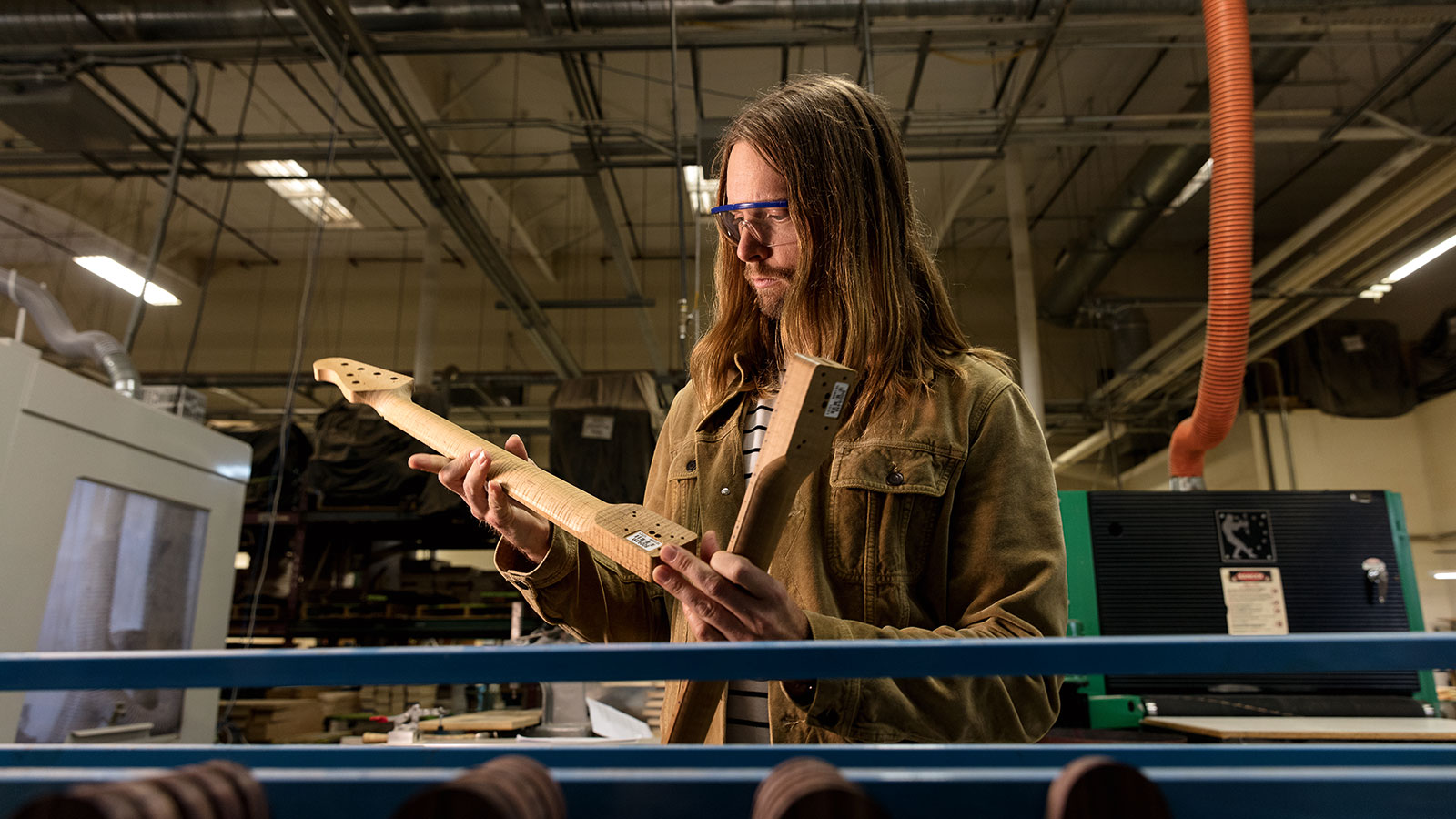
Ash meets maple
How did ash become the timber of choice?
JV: “That was pretty early on. For the last 10 years, I’ve been playing Teles as the main axe on stage with Maroon 5. They really cut through our mix. So we were always on ash.
“Y’know, if you get the right piece of ash, it’s lightweight, it has that resonance that gives you that Tele-ish tone. I also like that you can trace its origin. I’ve been involved with the issue of illegal logging, and it being from North America, you know exactly what forest it’s from.”
Whenever I get feedback, it’s always like, ‘Man, that neck!’ It just feels amazing
SB: “The first thing we had to do was assure James that everything we used was ethical and properly certified wood, because he’s an advocate for that and so are we. I don’t see the point in making a guitar if you’re leaving it so that tree doesn’t exist anymore. Or painting a guitar so that everybody around you has black lung from it.”
The roasted maple neck is a standout feature...
JV: “Whenever I get feedback, it’s always like, ‘Man, that neck!’ It just feels amazing. I hate that sort of ticky-tacky feeling that some neck finishes have. Also, the process of roasting really brings out the individual majesty, the figuring patterns of each piece of wood.”
SB: “I’m just glad it’s not rosewood. I like roasted maple. I’ve always appreciated figured maple. I like maple that’s aged on its own, but second-best is roasted. There’s a lot of stuff they say it does, by hardening the resin. I don’t know if that’s true. I just think it feels, looks and sounds great.
“James is not a flash guy, so it took him a long time to appreciate figured wood. If it was up to James, it would be straight-grain hard rock maple. But he’s getting used to these roasted necks now and starting to appreciate them, I think.”
JV: “Well, I was particular about the figuring patterns. I prefer a wider pattern on the neck, just aesthetically. But the more ‘tiger-striped’ ones are more sought-after. I like the patterns that are more spread out, which I guess are less desirable in the guitar community. I’ve got a couple of models on stage now that have pretty distinct tiger stripes, and I do like them.
“We based the neck profile on one of my C-shaped Teles, but I sat there with them, played the neck, handed it back, saying, ‘Y’know, it’s a little thick here...’. So we got a custom shape for me.”
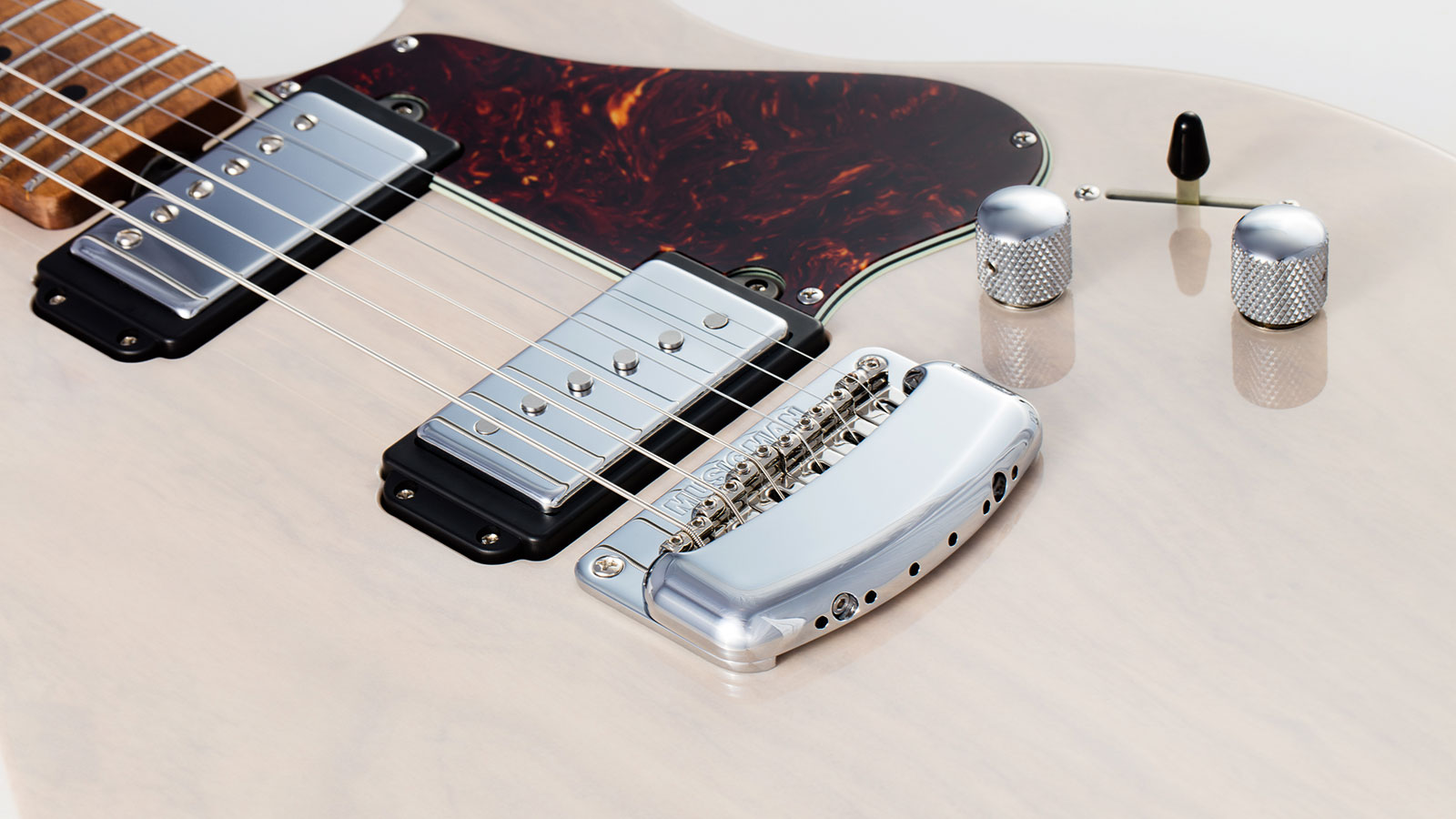
Let’s talk about electronics...
SB: “The pickups were designed to blend two of James’ favourite guitar sounds. The neck humbucker is similar to a vintage PAF and can be tapped to provide a single-coil sound. In tapped mode it employs the Music Man Silent Circuit to cancel hum and is level-matched with the full humbucker mode. The bridge pickup is designed for a vintage Tele vibe, but also has a pinch of the Music Man MM90 pickup we used for the first Valentine prototype.
“This pickup also uses the Silent Circuit for hum-cancelling. These are proprietary pickups and we’re voicing them for the artist - but before the artist sees it, we usually voice it for the wood and we’ll give them three options. James was quite picky about the bridge pickup...”
This circuit they designed is completely silent, but still has that vintage feel
JV: “I’ve played on stages all over the place, which have been pretty chattery in terms of electronic signals. It’s always been an issue, especially with vintage Teles. You’re just dying up there. My tech used to have to do all kinds of tricks, y’know, wrapping pickups in foil, and then I’d have to, like, face north [laughs].
“This circuit they designed is completely silent, but still has that vintage feel. So that’s really important. And then, the coil-tap just expands the versatility of that humbucker.
“The boost was something I didn’t even know was an option until I played the Luke. That’s such a nice little tool, because it’s adjustable, so you can just kick it up for a solo, or you could crank it up to 20dB, and depending on the amp, it’s like an overdrive. If I’m out on the ego ramp or whatever, I have it right there on my guitar.”
What’s the dominant factor in flavouring a guitar’s tone?
SB: “It’s a cocktail. It’s like, what makes a great car? It’s the sum total of all the parts. But let me tell you something: what people don’t understand is that one of the most significant things on your guitar is the bridge. That’s the anchor. That’s what makes the string vibrate.
“I could take that Valentine guitar and make saddles out of five different kinds of metal and each one is going to sound drastically different. It’s an art. Bridges are critical. With the classic hardtail bridge on the Valentine, even when you’re playing unplugged, the strings vibrate - and that’s attributed to the ash and roasted maple, but it’s really the connection that’s made at the bridge.
“For James, steel was a critical choice. But everyone’s got a different thing. There are certain people that like plastic saddles and the old tune-o-matic. I never got that. But you have to put your personal stuff aside if you’re designing guitars.”
JV: “I like the feel of that Ernie Ball bridge. It’s smooth, so I can rest my palm on there. That’s another problem you have with vintage Teles - there’s some sharp edges down there.”
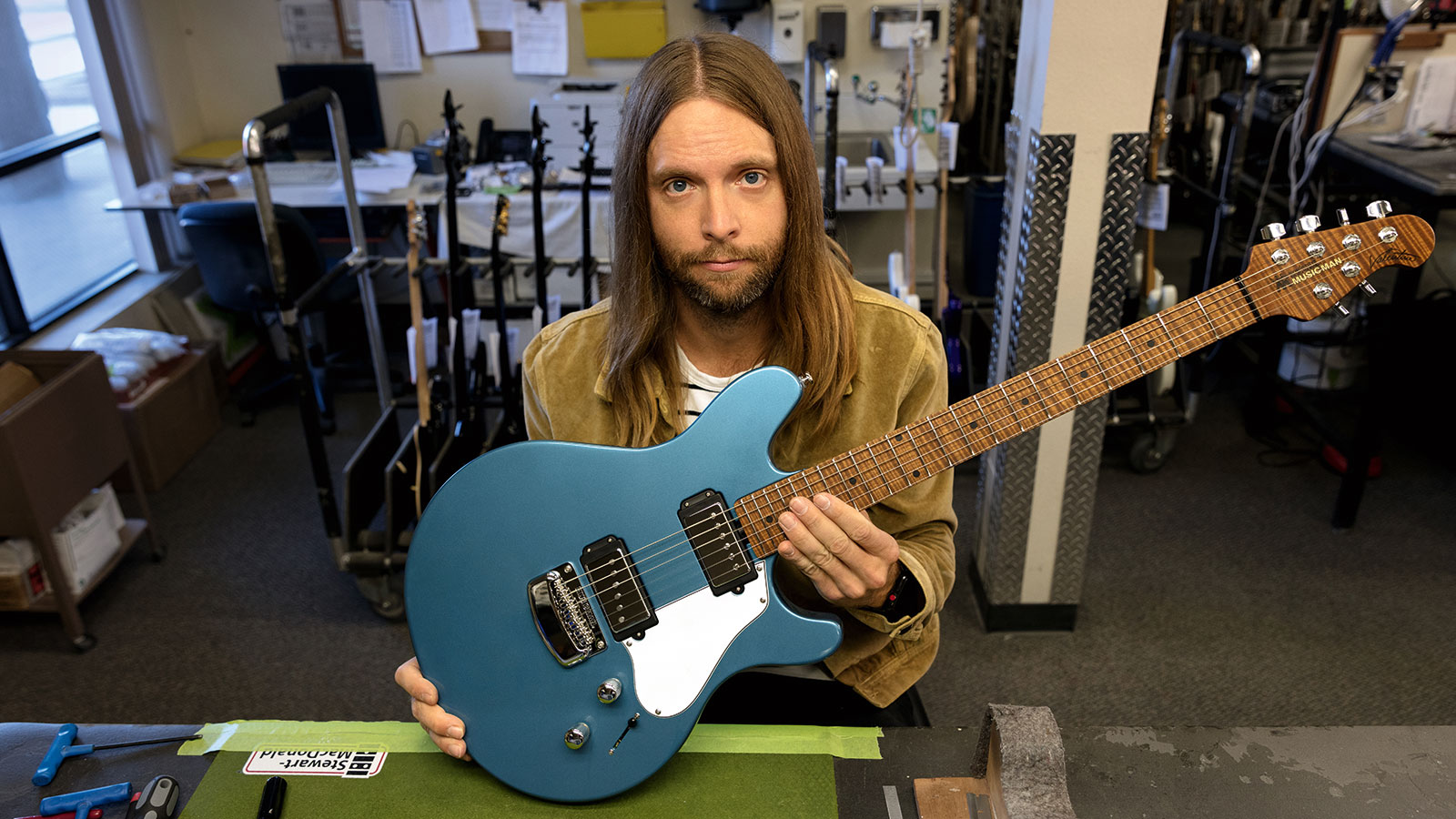
Prototypes and practicality
How did you balance tone with practical functionality when designing the Valentine?
SB: “Well, it’s chicken versus egg. The easier you make it to play, the better it’s gonna sound. It starts in your brain and heart, then goes to your fingers. So all the hand positions have to be right, then the balance, weight and fretting has to be right. Your hand has to be comfortable in a picking position.
“So I would say that it’s getting the guitar where it works ergonomically for the player - then working on the tone. Listen, if I made a guitar that sounded great but was unplayable, we’d never know if it sounded great.”
Were there any challenges or setbacks when creating the Valentine?
SB: “I wish I could tell you stories about how we had to crawl across cut glass and burning embers, but it was a pretty synergistic deal [laughs].”
How many prototypes did it take before the Valentine was how you wanted it?
That sorta snappy, funky sound comes from that longer scale length
JV: “We built a lot of guitars, maybe even a dozen prototypes. Because a bunch of stuff changed. We built a whole first round of prototypes with different pickup configurations, different patterns on the neck, different scale lengths. Because initially, I was thinking, ‘Well, it’d be cool to have a Tele but with a Gibson scale length.’ But when I was playing the initial prototypes, I picked up Annie Clark’s signature guitar and it had that longer scale, like a Fender, and I was like, ‘Oh yeah.’ I mean, part of that sorta snappy, funky sound comes from that longer scale length. So we went back to that.”
Do you feel like the Valentine has gone down well?
JV: “Absolutely. While the guitar was still a prototype, I snuck it into Maroon 5 rehearsals, without any explanation. I consciously didn’t say anything about it, because I wanted to gauge a true reaction. And instantly, I got great feedback from my bandmates, but also from our front-of-house sound guy, who came up to me right after our soundcheck and was like, ‘What is that? It sounds fantastic.’
“When we first launched, I stayed at NAMM for four days and, by the end, I was suffering from voice loss, but it was awesome to see all these major players come in and jam on it.”
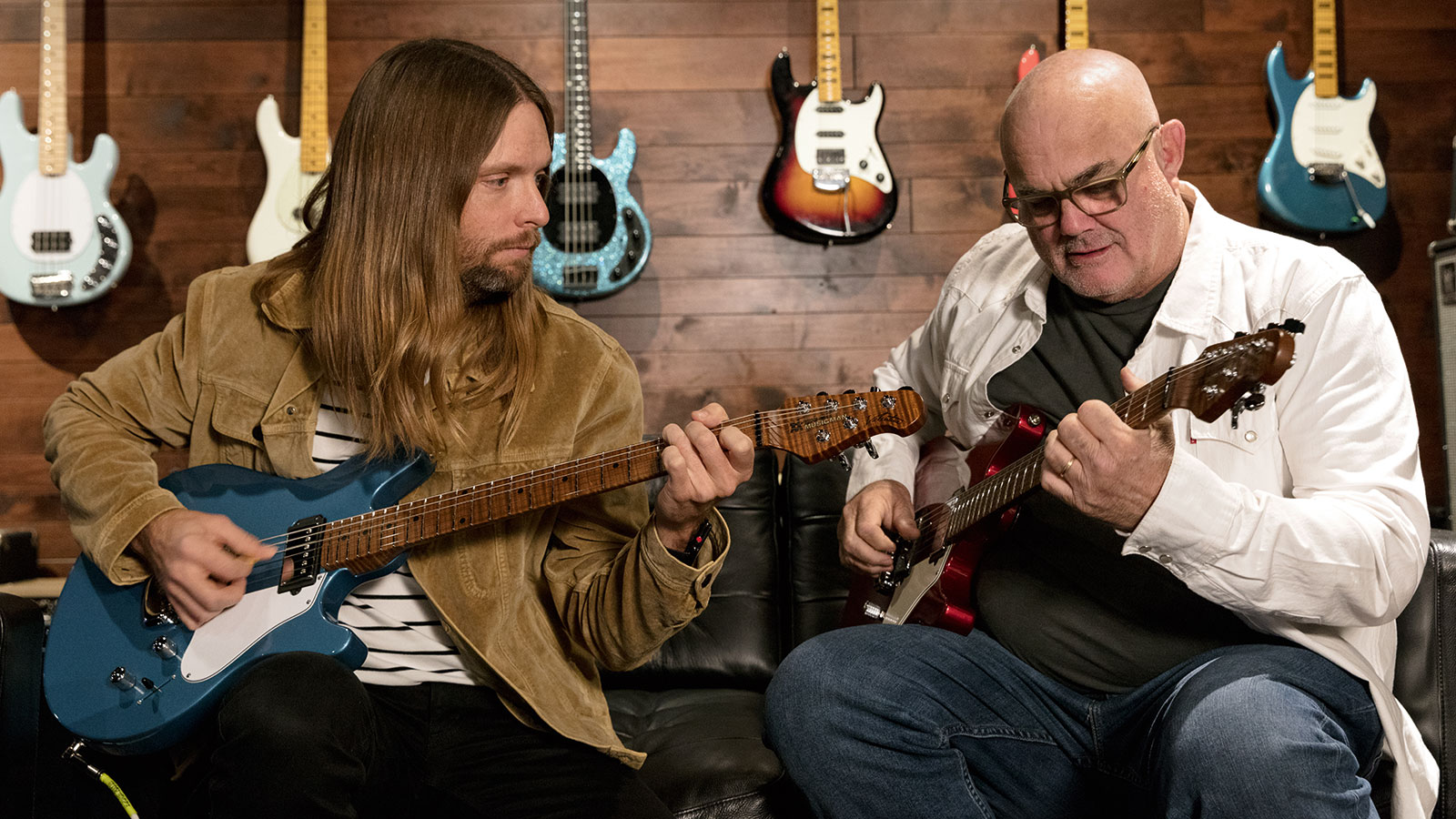
Welcome to the Family
More recently, there’s been a Ball Family Reserve model. Can you tell us more?
SB: “We make guitars in a certain niche. And with the cost of making of guitars in California - with the wood that we use - we certainly can’t go downmarket. We can make a guitar as elaborate as you want. We have the craftsmen, we have the intellect. We try to find the sweet spot where we can exist in the marketplace, and there has to be a certain amount of volume to drive it.
“We’re not a big company, so the bread-and-butter is the normal Valentine. But we really are selling ourselves short if we don’t allow the public to get the things that we’ve built for artists or for the family.”
How does the Ball Family Reserve guitar compare to the regular production Valentine?
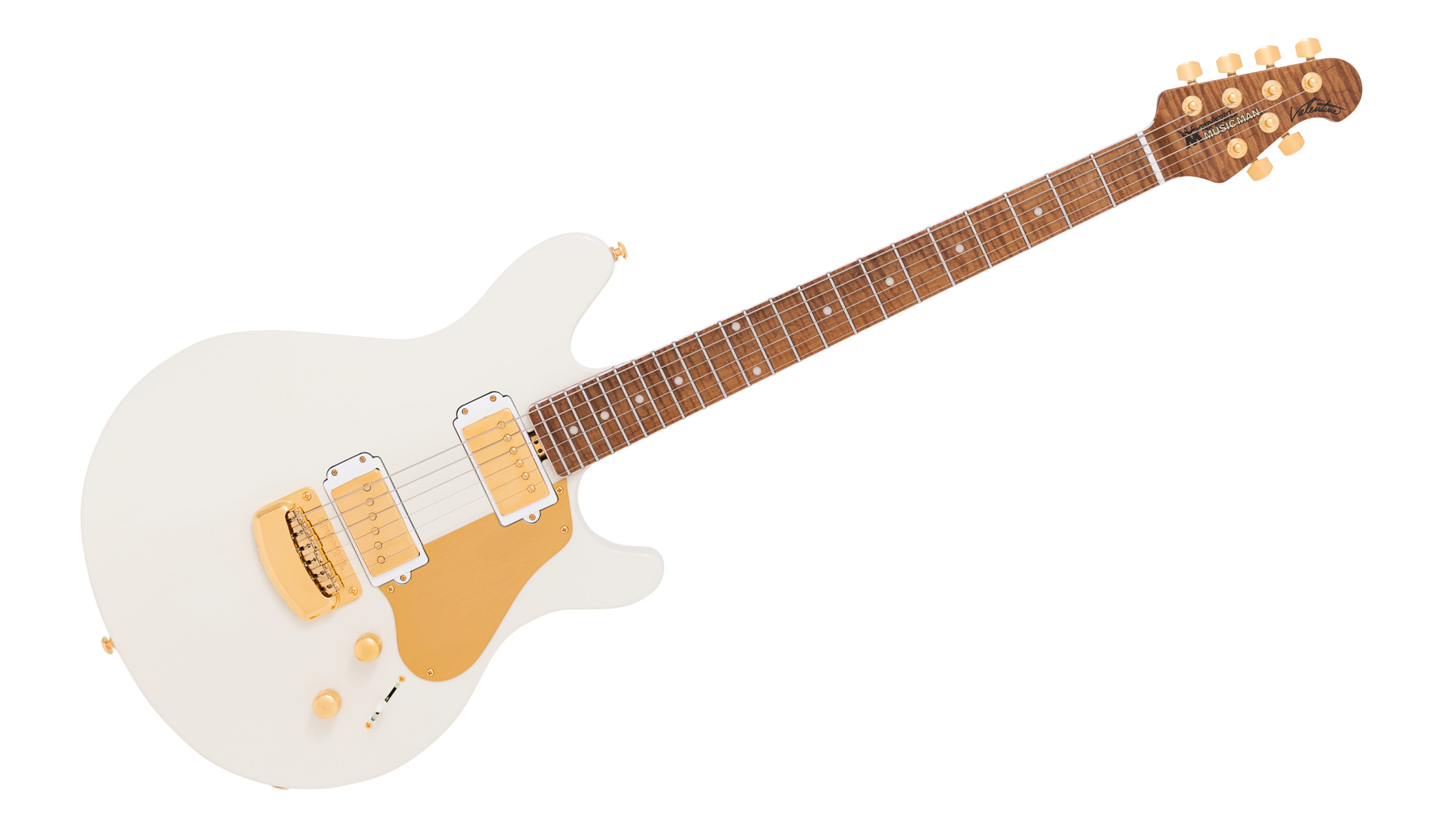
JV: “Those guitars are really special, and I’ve got a lot of feedback, especially on the white finish and gold hardware. We went back-and-forth on the colour combinations. I’m not usually a gold hardware sorta guy, but it’s kinda inspired by the White Falcon.
“I also really like the bound neck, which was something that we didn’t consider on the production model, just because we were so happy with that roasted-maple neck. It’s a cool tradition they have of making guitars that are really special conversation pieces.”
SB: “James was sorta allergic to the Ball Family Reserve stuff at first. But we won him over. Y’know, we made the one kinda like the Gretsch - white with gold everything. At first, it was too much for him. But I just loved it. [In the end] James just called us and said, ‘D’you think I could get one of those gold and white ones?’”
You decided on a run of just 89 BFR guitars - do you think players appreciate that exclusivity?
SB: “We can’t make them forever, so we settled on a number. And that number is based on when we show one at a trade show, how many people order one.”
JV: “I’m still waiting to get my white Ball Family Reserve model. I mean, my name is on the guitar, and I still can’t get my hands on one. I think they all sold out, so mine is still being made. That’s gonna be one of my big ones that I’m gonna play on stage in 2018.”
In a mass-produced world, is there a future for custom and limited-edition guitars?
JV: “Oh, absolutely. In the midst of our world moving to the cloud - and in the world of disposable electronics - I’m really happy to be involved in this real artisan craftsmanship, and these pieces that I’ll hand down to my kids.”
SB: “I ask myself that question all the time. And as long as we can do it, we’re gonna keep doing it. I want to make tools for artists. That’s what we do.”

